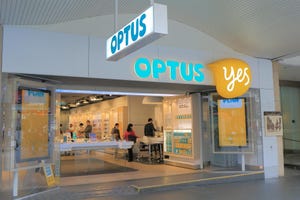
Amid a dramatic rise in air travel as pandemic restrictions recede, a growing number of companies are hoping to sell high-speed Internet connections to all those airborne Web surfers. Concurrently, other companies are hoping to beam Internet connections into hard-to-reach areas on the ground from various aircraft in those same altitudes.
The developments are noteworthy considering Internet providers have long fought with each other using networks on the ground, but recently expanded that fight into space via low Earth orbit (LEO) Internet satellite networks. Now, though, the Earth's stratosphere – an area roughly 6-12 miles above the planet's surface and traditionally the domain of commercial airliners, high-altitude blimps and other such aircraft – is evolving into another Internet battleground.
The newest competitor flying into the market is SmartSky. After years of fits and starts, the company recently announced it will switch on its air-to-ground inflight Internet service. The company touts coverage of 50% of business aviation flight hours in the continental United States, and expects that figure to grow to up to 90% by the end of this year.
According to AIN, SmartSky has demonstrated maximum connection speeds up to 15 Mbit/s, with consistent service in the range of 5 to 8 Mbits.
Internet from the ground to the air
But SmartSky isn't the only newcomer to the market. Dublin-based Aeronet Global Communications has been petitioning the FCC in the US to authorize spectrum for its proposed Gigabit "Internet of the sky" service.
"Aeronet will bring new competition into the aviation market through the introduction of a new connectivity technology, capable of handling the significant demand for high-speed broadband on each equipped aircraft," the company told the FCC in 2019. "Consumers will be able to access their own HD content, online and streaming applications, and data services, at terrestrial equivalent speeds and latency, as they travel."
Specifically, the company is touting its scheduled dynamic datalink (SDDL) technology that it says can transmit large volumes of data over long distances by establishing point-to-point networks with narrow-beam spectrum.
"In March 2017, Aeronet successfully achieved continuous 1 Gbit/s download and upload speeds in its test aircraft in Ireland," the company told the FCC. "This alpha test employed proprietary discovery and tracking techniques for the ground station to establish and maintain the air-to-ground SDDL. Aeronet has achieved similar and higher speed results during beta testing of the maritime application of its SDDLs off the coast of Florida. In these beta tests during 2018, Aeronet achieved 3 Gbit/s speeds and successfully switched between two SDDLs with near unnoticeable service interruption during handover. Aeronet has since installed further test ground stations in the Bahamas for expanded live environment service testing across multiple network nodes."
Importantly, the FCC recently indicated it might be open to Aeronet's proposals, which call for Aeronet operations in the 70/80/90GHz bands. Specifically, the FCC said it would "further develop the record on Aeronet's proposal" by soliciting comments on the topic.
However, the agency stopped short of an outright approval of Aeronet 's plans, and instead said it would merely seek further comments on the matter.
Of course, SmartSky and Aeronet aren't alone. Other companies selling in-flight Internet services include ViaSat, Panasonic Avionic and Gogo. Indeed, Gogo recently indicated momentum around its plans, indicating it now expects an annual revenue growth rate of approximately 15% from 2020 to 2025, versus a prior target of at least 10%.
Gogo had planned to launch an American-made, 5G-powered network for in-flight Wi-Fi sometime this year – an upgrade to its current 3G air-to-ground (ATG) network – but chipset shortages will delay that launch until 2022.
To be clear, the idea of speedy Internet from the ground to the sky – and asking the FCC for spectrum for the effort – is not a new one. For example, Qualcomm in 2012 promised to supply 300 Gbit/s connections to aircraft using transmissions in the 14GHz band. But the company began shifting away from that idea by 2015.
Petitions from Qualcomm, Gogo and others to the FCC for an auction of 14GHz spectrum petered out in 2016.
Internet from the air to the ground
The FCC's nod to Aeronet's SDDL was part of a broader effort by the agency to look at a variety of operations in the 70/80/90GHz bands. Specifically, the FCC said it would also seek comments on whether High Altitude Platform Stations (HAPS) could use the spectrum bands.
Among the companies urging the FCC to investigate HAPS in the 70/80/90GHz bands was Alphabet's Loon, an attempt by the Google X lab to provide Internet services in rural areas from high-altitude balloons.
"Loon ... supports the commission's proposals to promote innovation in the 70/80GHz bands," the company told the FCC last year.
However, Loon's journey "is coming to an end," wrote its chief executive Alastair Westgarth earlier this year in announcing the wind-down of the company.
But that's not the end of the story. Japan's SoftBank said last month it acquired 200 Loon patents in order to bolster its own HAPSMobile operation. Launched in 2019, SoftBank's HAPSMobile plans to use autonomous drones to beam Internet services into unconnected areas all over the world. At the time, the company said it hoped to begin mass producing the drones for commercial service by 2023.
And HAPSMobile isn't the only company looking to provide HAPS-based Internet services. Intelsat, Elefante and Altaeros are among the other companies looking at the sector.
The FCC's move to consider SDDL and HAPS in the 70/80/90GHz bands could be viewed as a bit of a blow to the 5G industry. CTIA, the main trade group for 5G providers in the US, argued that the agency should "refrain from acting on any proposals that would expand the services" in the band. Instead, CTIA urged the commission to focus on new rules that would "facilitate fixed 5G backhaul" in the bands.
"The 70/80/90 GHz bands can provide the critical high-speed backhaul needed to address our nation's burgeoning demand for data in years to come," CTIA wrote last year.
Related posts:
— Mike Dano, Editorial Director, 5G & Mobile Strategies, Light Reading | @mikeddano
About the Author(s)
You May Also Like












